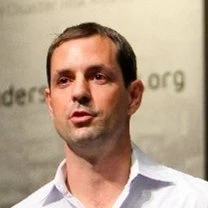Available 日本語

These are exciting days at the World Bank Group. We are getting ready to receive delegates from our 188 member countries, who will gather in Washington for the WBG-IMF Spring Meetings.
It is an especially important time for the Global Facility for Disaster Reduction and Recovery (GFDRR) and the disaster risk management team at the World Bank, as we prepare to host – together with the European Union, the Government of Japan, and USAID – the fourth round of the Resilience Dialogue. This round we are focusing on the role disaster and climate resilience can play in the post-2015 development framework.
Disaster and climate risks were not addressed as part of the original framework of the Millennium Development Goals (MDGs). Recent experience has provided countless examples of the devastating impacts of disasters – impacts that go well beyond dollar signs or GDP statistics. It has become evident that disaster and climate risks are impediments to the achievement of poverty reduction and sustainable development goals, and should therefore be integrated in the development framework that will replace the MDGs.
There are different ways to do so. The Global Consultation on Disaster Risk Reduction and the Post-2015 Development Agenda held in Jakarta in February concluded that disaster resilience should be mainstreamed across the post-2015 goals and combined with a stand-alone goal on disaster risk reduction. Some are advocating for disaster resilience targets within a broader resilience goal that would address “obstacles” to development. Others would like to see a stand-alone goal that focuses specifically on managing disaster risks. While the details are still to be defined, it is becoming clear that shared prosperity and sustainability will be central to the new framework.
With this in mind, and as we prepare to face the challenges of the future – rapid urbanization and the very concrete threat of a 4 degree-warmer world and the climate extremes that come with it – we know that we cannot ignore disaster and climate risks. The decisions that we take today will ultimately determine whether we can achieve shared prosperity and a growth path that is sustainable.
At the World Bank, we have too often witnessed how disasters can set back development progress, so we have chosen the path of resilience and committed to step up our efforts to integrate disaster and climate risk considerations in every aspect of our work. When it comes to the post-2015 development framework, we should practice what we preach and make the case for integrating risk considerations in the new framework.
Through meetings like the Resilience Dialogue, we can add our voice to the conversation on the post-2015 agenda and help build the path towards resilient development – 2015 and beyond.
Add your voice to the conversation at this week's Resilience Dialogue. Send your questions for the speakers to resilience.dialogue@gmail.com or via twitter @GFDRR #resilience.
Watch the event live at 5 p.m. (EDT) on Friday, April 19.
Photo: Building a sea wall in Kiribati, a small island state facing rising risks from climate change. Lauren Day/World Bank


Join the Conversation